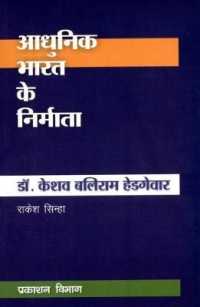基本説明
Examines whether a small nuclear arsenal or a nuclear triad, as declared by India, is suitable for bringing stability to the region, as well as the risk of an accidental nuclear conflagration.
Full Description
This collection of seminal articles illustrates the reasons for the spiraling nuclear race in the Asian subcontinent and introduces the principal debates in the field. Authors discuss whether the acquisition of nuclear weapons by the South Asian powers has raised the likelihood of a nuclear war in the subcontinent or reduced the chance of a conventional war breaking out. They examine whether a small nuclear arsenal or a nuclear triad, as declared by India, is suitable for bringing stability to the region, as well as the risk of an accidental nuclear conflagration. The first section charts the evolution of nuclear programmes on the basis of realpolitik, and the second section analyses nuclear policies on the basis of religious and cultural ethos. A few essays turn the spotlight on the role of external powers in accelerating, decelerating and mediating the ongoing nuclear tension between India and Pakistan.
Contents
Contents: Introduction; Part I Realpolitik and Nuclearization of South Asia: Preventing the 'Smiling Buddha': British-Indian nuclear relations and the Commonwealth Nuclear Force 1964-68, Susanna Schrafstetter; Debating New Delhi's nuclear decision, Rodney W. Jones and Sumit Ganguly; Nuclear deterrence in South Asia: the 1990 Indo-Pakistani Crisis, Devin T. Hagerty; India's nuclear doctrine and command structure: implications for India and the world, Harsh V. Pant; Regime design matters: the CTBT and India's nuclear dilemma, Jyotika Saksena; Toward a 'force-in-being': the logic, structure, and utility of India's emerging nuclear posture, Ashley J. Tellis; India as a nuclear power, Stephen P. Cohen; Limited cooperation between limited allies: India's strategic programs and India-US strategic trade, Varun Sahni; Lest we forget: the futility and irrelevance of nuclear weapons for India, S.R. Valluri; Nuclear and missile development, Pervaiz Iqbal Cheema; Pakistan's nuclear weapons program: turning points and nuclear choices, Samina Ahmed; Weapons of mass destruction: Pakistan's perspective, Jamshed Ayaz Khan; Emerging NMD technologies and India: impact and options for Pakistan, Maria Sultan; The Indian Ocean and the 2nd Nuclear Age, Donald L. Berlin. Part II Strategic Culture and Nuclear Weapons: Hinduism and the ethics of weapons of mass destruction, Katherine K. Young; Of oral traditions and ethnocentric judgements, Waheguru Pal Singh Sidhu; Name index.








